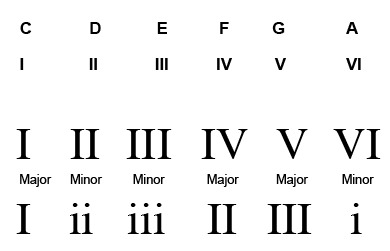There are no items in your cart
Add More
Add More
| Item Details | Price | ||
|---|---|---|---|
By Noel Prashanth Published on: Mon Apr 25, 2022
The big roman numeral represents a major, and the small roman numeral a minor. This gives us an easy way to identify chord relatives in the C Major scale – (C Major, A Minor), (F Major, D Minor), (G Major, E Minor). Practise these chords with your right hand while using the left to lead with the root for the chord.

Founder of The Skelly Project and a sought-after keyboardist for many popular bands, your teacher is an accomplished musician and Grade 8 from Trinity College London. Passionate about music early on, he started performing at the age of 9, and was a quarter-finalist on India’s Got Talent Season 7.
While practising chords on the keyboard, there is a useful system that can be applied to identify the chord relatives in any scale. This is done using the roman numerals – I, II, III, IV, V, VI, VII. We assign the big roman numeral to represent a major, and the small roman numeral to represent a minor.
For the purpose of this blog and to give you a fair idea of this chord number system, we use the C Major scale, since you’re already familiar with it from your reading of the previous blog posts. The below illustration demonstrates how to arrive at major and minor chords using this simple rule-based system.

This gives us an easy way to identify the chord relatives – (C Major, A Minor), (F Major, D Minor), (G Major, E Minor). The VII note is deliberately left out for now, as it represents what is known as a diminished chord, which is a slightly more advanced concept. We’ll come to that in later posts. For now, these six chords should suffice for your learning and understanding.
Practise these chords with your right hand, while using your left as a guide to lead with only the root for the chord – C, D, E, F, G, A. Play the chords in this very same order – C Major, D Minor, E Minor, F Major, G Major, A Minor, as well as in the descending/reverse order.
When you play it in this continuous fashion, it may almost feel like an entire song to you. The important thing is to get familiarised with this chord numbering system, so you can quickly arrive at the major and minor chords in any scale.
The speed at which you play or practise is another key element that will determine how good a keyboardist you are. Speed by itself would not suffice, accuracy at whatever pace you play is paramount. In the upcoming post, we’ll explore how to use a metronome to set the tempo.